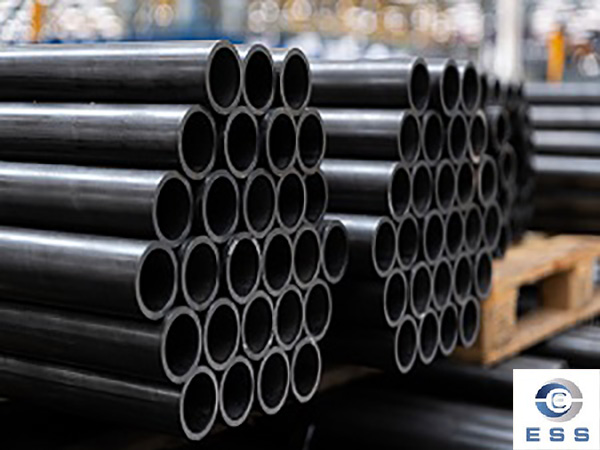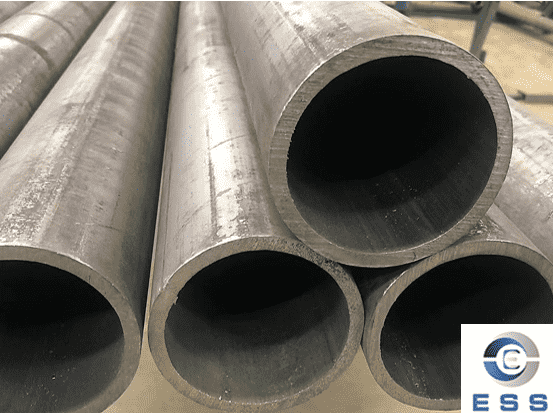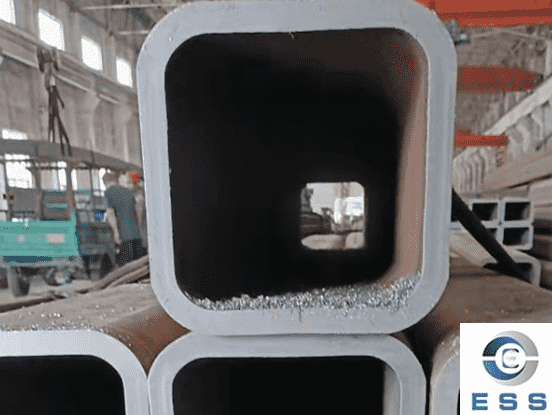Seamless
black steel pipe refers to seamless
steel pipes that have not undergone galvanizing or anti-corrosion
coating treatment. They are called "black steel pipes" because of
their dark oxide film on the surface. Compared to welded
steel pipes, seamless black steel pipes have no weld defects and have
significant advantages in pressure resistance, structural uniformity, and
safety reliability. Therefore, they are widely used in industrial fields with
high strength and stability requirements.
Seamless black steel pipes have a wide
range of applications due to their high strength and low maintenance costs.
They are commonly used to transport natural gas and water to urban and rural
areas, or to protect power transmission lines and pipelines transporting
high-pressure steam and air. In addition, black steel pipes are also used in
the petroleum industry to transport large quantities of oil to remote areas.

Types of black steel pipes
There are two methods for producing steel
pipes, ultimately resulting in either welded steel pipes or seamless steel
pipes. Both methods involve first casting crude steel into an initial shape
that is easier to process, then stretching the steel to form a seamless steel
pipe, or pressing the edges together and sealing them with welding to finally
produce the steel pipe.
1. Welded Black Steel Pipe
The forming process of welded steel pipe
involves passing a steel strip through a series of grooved rollers to form a
circular shape. Then, the unwelded steel pipe is passed through welding rods.
These devices weld the two ends of the steel pipe together.
Welded black steel pipe has thin walls, is
lightweight, and has high strength, making it ideal for bicycle frames.
2. Seamless Black Steel Pipe
As early as 1840, steelworkers were able to
produce seamless steel pipe. One method involved drilling a hole in a solid
metal billet. The billet was then heated and stretched through a series of dies
to form a tube. This method was inefficient because it was difficult to drill a
hole in the center. This resulted in uneven pipe thickness, with one side
thicker than the other. In 1888, an improved method was patented. In this
process, solid bricks were cast around a refractory brick core. After cooling,
the bricks were removed, leaving a hole in the center. Subsequently, new
rolling techniques replaced these methods.
Modern seamless black steel pipe production
has achieved uniform wall thickness, high dimensional accuracy, and stable and
reliable pressure resistance, making it the preferred material for the oil,
gas, power, boiler, and pressure vessel industries.
What are seamless black steel pipes used
for?
1. Energy and Oil & Gas Industry
Seamless black steel pipes can be used in
crude oil pipelines, natural gas gathering and transmission systems, and
refinery process pipelines.
Common Standards: ASTM A106/A53,
API 5L, EN 10216
2. Construction Industry
Seamless black steel pipes are widely used
in scaffolding columns, steel structure supports, and underground pipe
galleries. According to data from the China Iron and Steel Association, the
construction sector accounts for approximately 40%–45%
of the total demand for black steel pipes.
Common Standards: GB/T 8162, EN
10210, EN 10219, DIN 1629, ASTM A500
3. Machinery Manufacturing
Seamless black steel pipes are also used in
the machinery manufacturing industry, such as mechanical structural pipes,
equipment frames, drive shafts, and hydraulic lines. Its high rigidity and
fatigue resistance make it a preferred choice in heavy equipment manufacturing.
Common standards: EN 10297-1, DIN 2391,
ASTM A106, ASTM A519, GB/T 8162
4. Industrial Piping
Seamless black steel pipes are commonly
used in high-pressure steam systems, compressed air pipelines, and industrial
cooling water and drainage systems.
Common standards: ASTM A106, ASTM A53,
API 5L, EN 10216, GB/T 8163
5. Other Applications
Seamless black steel pipes can also be used
in other fields, such as automotive manufacturing, HVAC, refrigeration
equipment, pharmaceutical and chemical plants, etc.
Is seamless black steel pipe suitable
for drinking water?
Seamless black steel pipes are generally
not used in drinking water delivery systems.
Reasons include:
Black steel pipes do not have internal
anti-corrosion treatment, and long-term contact with water can easily lead to
oxidation and corrosion; Rust and mineral deposits may cause:
Water pollution;
Pipe scaling and blockage;
Shortened service life.
Therefore, drinking water systems more
commonly use galvanized steel pipes, stainless steel pipes, plastic-lined steel
pipes, and ductile iron pipes, while seamless black steel pipes are mainly used
in non-drinking industrial fluid systems.
FAQ
1. Are seamless black steel pipes suitable
for high-temperature or high-pressure environments?
Yes.
Due to their weld-free structure, seamless
black steel pipes exhibit greater stability under high-temperature,
high-pressure, and alternating load environments. They are commonly used in
boiler piping, steam systems, and high-pressure fluid transportation,
applications that welded steel pipes cannot replace.
2. Do seamless black steel pipes require
additional anti-corrosion treatment?
It depends on the environment:
Indoor or dry environments: Generally, no
treatment is required;
Damp or underground environments: Painting,
rust-preventive oil, or external anti-corrosion treatment is recommended;
Corrosive media: Epoxy coating, 3PE, or
internal lining are optional.
3. Why do engineering projects prefer
seamless black steel pipes?
Because seamless black steel pipes have a
higher safety factor, are less prone to leakage, are easier to pass third-party
testing, better comply with European and American engineering standards, and
have lower overall costs in the long run.
Summary
Seamless black steel pipes, with their
seamless structure, high pressure resistance, and wide adaptability, have
become a key material in global energy, construction, machinery, and industrial
piping systems.
Read more: What
should you know about black steel pipes? or Black
steel pipe vs carbon steel pipe













 Eastern Steel Manufacturing Co.,Ltd not only improve product production and sales services, but also provide additional value-added services. As long as you need, we can complete your specific needs together.
Eastern Steel Manufacturing Co.,Ltd not only improve product production and sales services, but also provide additional value-added services. As long as you need, we can complete your specific needs together.










